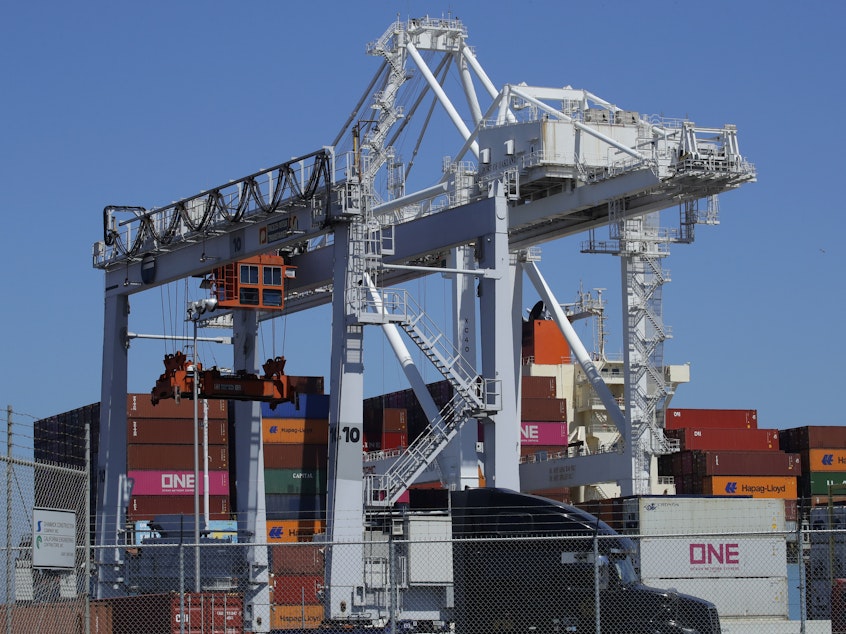U.S. Economy Slows: Trump's 3% Growth Pledge Now In Rearview Mirror

U.S. economic growth fell to a 2.1% annual rate in the second quarter — down from a 3.1% pace in the first three months of 2019, the Commerce Department said. But growth came in slightly stronger than many analysts had expected.
Updated at 10:59 a.m. ET
President Trump has targeted a growth rate of 3% or above, citing the Republican tax cuts passed in 2017. But some studies have found that the tax cuts passed have done little to boost growth, in part because most of the benefit went to wealthy people and corporations.
A 5.2% drop in exports — amid economic weakness in Europe and elsewhere as well as the U.S. trade war with China and other countries — contributed to the slowdown.
"Trade policy uncertainty weighs on companies," said Randy Kroszner, a former governor on the Federal Reserve Board. "They have to think about 'do I invest now do I invest later?' "
Sponsored
In addition to weaker exports, the Commerce Department cited a number of other factors for the slowdown, including drops in business investment and investments in commercial and residential real estate. But consumer spending jumped 4.3% in the second quarter and government spending surged 5%.
Friday's gross domestic product report is a key indicator ahead of the Federal Reserve's expected interest rate cut next week.
"Today's data provides more ammunition for those arguing that the Fed should cut interest rates at its next meeting," Josh Bivens, research director at the Economic Policy Institute, said in a statement. "A growth slowdown is clearly happening."
But Ian Shepherdson, chief economist at Pantheon Macroeconomics, said the economy isn't so weak that it needs the Fed to cut rates aggressively.
"This economy is not broken, and it does not need Fed action to fix it," he said in a statement. Shepherdson noted that economic growth averaged 2.6% in the first half of the year, topping the 2.4% average for the previous five years.
Sponsored
"The GDP report shows that the economy is growing pretty solidly," Kroszner said, adding that there "no evidence that we're going off a cliff."
Don't see the graphic above? Click here.
The economic slowdown comes even as unemployment, at 3.7%, is at near 50-year lows. Over the past three months, employers have added an average of 171,000 jobs each month.
The trade war has taken a toll on manufacturing, and Boeing's ongoing problems with the grounding of its top-selling 737 Max have also hurt the economy, analysts say.
"We're already seeing some signs of slowing momentum in the U.S. economy and slowing business investment overall," Greg Daco, chief U.S. economist at Oxford Economics, told NPR's Jim Zarroli this week. Daco said Boeing's troubles probably shaved about 0.1 of a percentage point off U.S. growth during the second quarter. [Copyright 2019 NPR]


